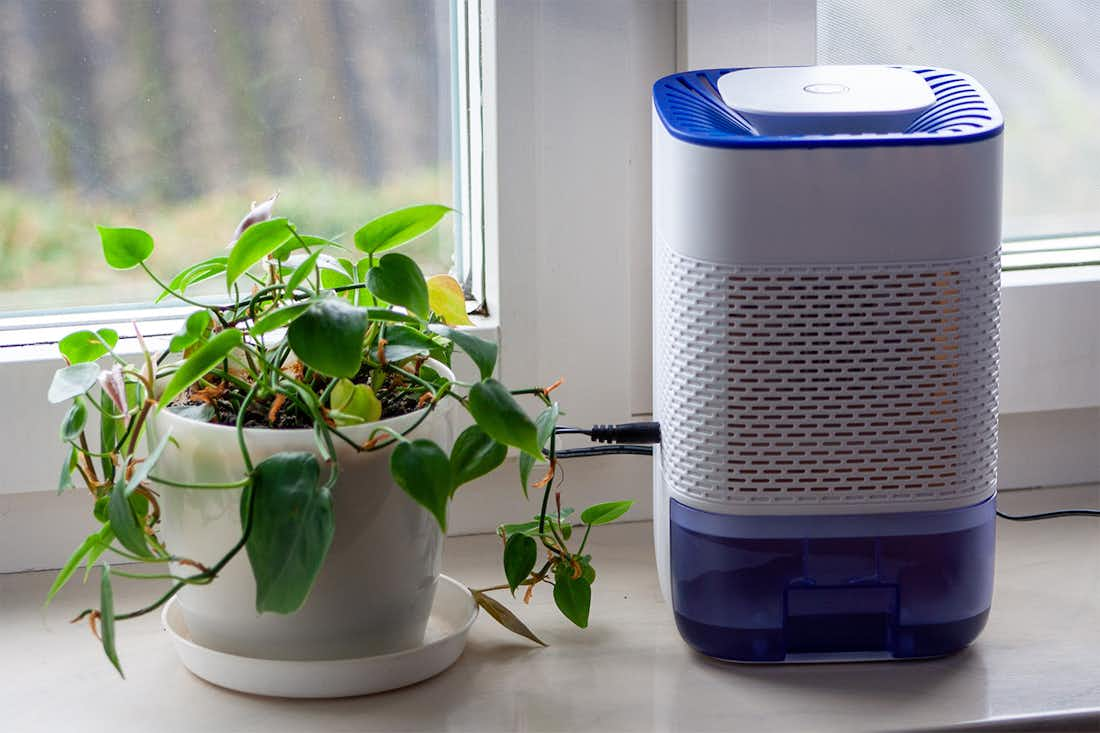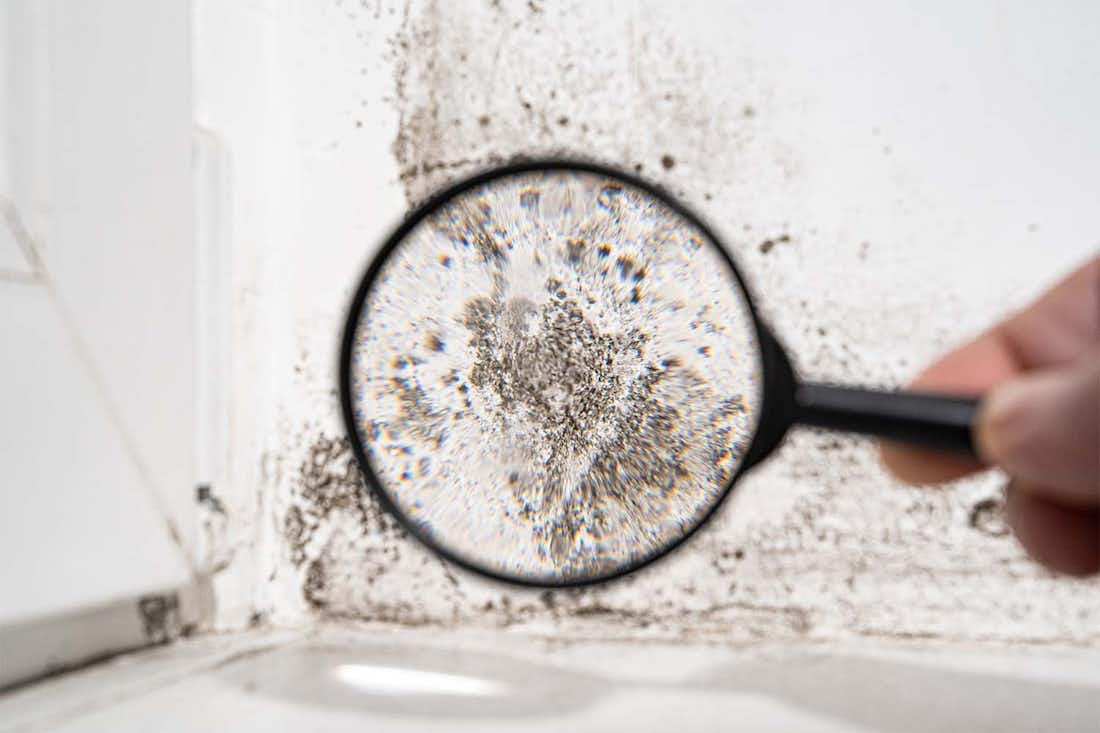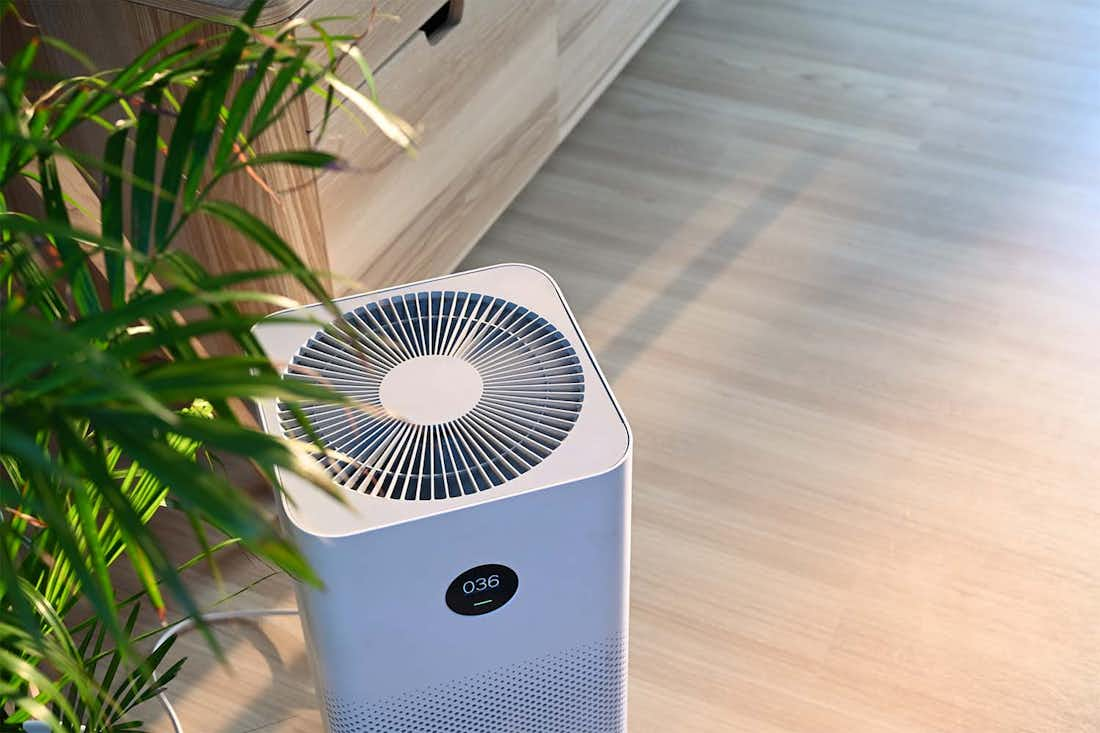Jun 14, 2022
5 Effective Mold Prevention Tips
5 minute read
Moldy bread and moldy cheese can be pretty gross, but that’s not the same type of mold that might be causing your sneezing and wheezing. Mold spores are among the most common indoor allergens, and they can grow in places where you’d least expect them.
Let’s take a look at some of the best ways to prevent mold from growing in your humble abode. It’s time to reclaim your home as a safe haven from allergy triggers once and for all.
1. Keep Humidity Healthy
Have you ever taken a walk through the forest and noticed tiny mushrooms sprouting all over the ground? You might have noticed that they grow most frequently directly underneath tree trunks, where it tends to be wet, dark, and humid.
High humidity makes for an ideal environment for mold growth. Mold is a fungus in the same way as a mushroom, and if your living environment is filled with moisture, there’s a great chance it will also be filled with mold.
Certain areas of your house will be more prone to excessive moisture problems and high humidity levels than others. Your bathroom, basement, attic, crawlspaces, or underneath your kitchen sink are the perfect breeding grounds for mold to form. These areas are dark and are often filled with moisture, so taking steps to reduce humidity is necessary to prevent the growth of mold.
Humidity is the measure of water particles in the air per square inch. A home’s relative humidity should be between 40 and 50% for maximum comfort and minimal mold growth. Anything above 50% might feel sticky and heavy, and this is when mold will thrive. Anything under 40% might start to feel dry, leading to cracked skin and general discomfort.
You can control the humidity in your home with a dehumidifier, which works to remove moisture from the affected areas. Place these in areas where indoor humidity is likely higher, like your basement or bathroom. If you have had recent plumbing leaks and water damage, place a dehumidifier near the source of moisture and clean the area.
2. Get a HEPA Filter
A high-energy particulate air filter, or HEPA filter, is a mechanical filter that serves to remove harmful particles from the air. Theoretically, this mechanism can remove 99.97% of dust, pollen, mold, bacteria, and other airborne particles.
While this might not necessarily prevent mold from growing in your home, it can work to prevent mold from triggering your allergy symptoms. These can pull mold spores from the air before they reach your respiratory system, helping to enhance your overall comfort and prevent health problems.
HEPA filters can also remove other common allergens from the atmosphere, like dust or pollen, which can help to alleviate your symptoms overall while improving air quality. These are a great addition to the home of anyone with frequent allergies and anyone looking to breathe fresher air.
3. Open Your Windows
Another great way to cut back on mold growth in your home is simply opening your windows and letting in some fresh air. Allowing air to move throughout your home freely can allow humidity to dwindle, making it more comfortable for you and less inviting for mold spores.
Fresh air can also help dry out musty, damp areas of your home to reduce mold growth. This also reduces odors and feelings of stuffiness. Plus, opening your windows is free!
The only consideration is that if you have seasonal pollen allergies, you may want to limit this trick to just once or twice a day for a limited period. This is because pollen or other triggers from outside might flow inside, worsening your allergy symptoms despite the mold growth coming to a halt.
4. Use Green Cleaning Products
If you happen to find excess mold growth in your basement, attic, or another area of your home, it’s necessary to clean it before it continues to inundate your sinuses. However, you need to be careful of the type of products you’re using to eradicate it.
Chemical cleaning products contain volatile organic compounds, or VOCs, which are harsh contaminants that can trigger similar symptoms to mold allergies themselves. If you use these to clean away mold, you’re trading one contaminant for another.
Instead of using chemical aerosols or harsh, abrasive cleaners, it’s good to stick with water-based, natural cleaners that are non-toxic. These have the greatest chance of washing away the mold with the least chance of making you sneeze, wheeze, and cough.
5. Keep Your Living Space Dry
Since you know that mold can grow quickly in damp and warm environments, it’s naturally important to keep your living space dry. While it’s easy to clean up liquids that are spilled on hard surfaces like counters or hardwood floors, spills in other areas need a little extra care.
If you spill liquid on a carpet, it is important to dry the carpet — and the floor underneath — as quickly as possible. This is because even if the top surface is dry, there may still be moisture underneath the carpet between the floor itself. Since that area is dark as well, it’s the perfect environment for mold to form.
Additionally, if you just experienced a flood in your home due to severe weather, it is important to quickly get the water out of your environment. Floodwater may contain bacteria and other chemicals that can foster mold growth more quickly than other types of water. You can use a sub-pump to drain water from areas inside of your home to the outside.
How Should I Properly Clean Mold and Mildew?
If you notice mold or mildew growing on your walls, it’s time to start enacting those five tips above. However, you also need to properly clean the mold off the walls to prevent it from coming back.
Here’s what you’ll need:
- Bleach
- Water
- White vinegar
- 3% hydrogen peroxide
- 2 spray bottles
- A scrubbing brush or sponge
The Method
Cleaning mold or mildew is pretty easy — but it's important that you’re using the right ingredients, and our solution is pretty effective. Here’s what you’ll do.
- Make a solution of one part bleach to three parts water in one of the spray bottles.
- Using the bottle, saturate the mold and surrounding areas to ensure that all spores are covered.
- Allow the solution to soak for around 15 minutes.
- Use the brush or sponge to remove the mold from the walls physically. Use gentle pressure, so you don’t strip the walls.
- Repeat as necessary.
- Using the second spray bottle, make a 50/50 mixture of vinegar and peroxide.
- Spray the cleaned surface, allowing it to absorb and dry on its own.
This method is so effective because it does more than just remove mold from the surface: it also works to prevent it from coming back in the first place. And if you don’t have peroxide on hand, you can even use baking soda instead.
How Can I Treat Mold Allergies?
Even if you can’t quite eradicate your mold problem, you can still take some defensive measures to make sure they don’t bother you as much. Here are some of the best ways to treat your mold allergies.
Antihistamines
Your body contains antibodies called immunoglobulin E, or IgE, which react to the proteins in certain substances, such as mold. When this occurs, it triggers the release of a chemical called histamine, which is responsible for causing most of the reactions that we know as allergy symptoms.
You can use medications called antihistamines to block the effects of this chemical to bring you relief. They are often fast-acting, making them a great way to relieve symptoms associated with mold, pet dander, dust mites, or other indoor allergies.
Oral antihistamines can be taken by mouth for full-body relief, but you can also use nasal spray antihistamines if you tend to feel congestion, sneezing, or runny nose more frequently. You can even use eye drop antihistamines to get rid of itchy, watery allergy eyes fast.
You can buy antihistamines over the counter, and Cleared has generic versions of all your favorites from some of the lowest prices on the market. And if you need something with a bit more kick, our Prescription Power Pack is perfect for bringing relief to the most severe allergy symptoms.
Allergy Immunotherapy
While antihistamines can quell allergy symptoms fast, they don’t address the root cause. To prevent allergies from happening in the first place, allergy immunotherapy is the way to go.
Allergy immunotherapy, or AIT, works by gradually exposing your immune system to an allergen over an extended period. By the end of treatment, your body becomes accustomed to the trigger and is less affected by it overall.
Allergy immunotherapy typically requires injections, but here at Cleared, we offer FDA-approved sublingual immunotherapy. Sublingual immunotherapy is highly effective for allergy treatment, and it works from the inside out. As opposed to injections, sublingual immunotherapy only requires you to take a dissolvable oral tablet under your tongue.
Although FDA approved treatment is not available for mold, it is available for dust mites, grass and ragweed allergies. Cutting down the number of allergens you are allergic to will help your mold allergies too! If you think prescription immunotherapy might be the key to stopping your allergies in their tracks, take your free allergy consultation from Cleared. You’ll get a personalized treatment plan that works for you — all from the comfort of your own home.
Home Remedies
If antihistamines or immunotherapy still just aren’t enough to make you feel comfortable in the face of mold allergies, there are some lifestyle and home remedies you can take into consideration.
For itchy, watery eyes, you can use a cold compress over your eyelids to reduce inflammation and enhance your comfort. Just wet a washcloth under running water and wring it out until damp, placing it over the eyelids for about 15 minutes at a time.
If your symptoms are largely confined to nasal congestion, you can use a neti pot to dispel excess mucus and make it easier to breathe. These are containers designed to rinse debris from your sinuses. Use a solution of boiled water (that has cooled) and saline to flush out mucus and make your nostrils feel less heavy.
Mold spores can also cause a sore throat or an uncomfortable feeling in the throat due to increased inflammation. If that’s the case for you, try sipping on hot tea with some lemon and honey to calm throat soreness, break up mucus in your throat, and enhance your overall state of relaxation.
In Conclusion
Mold is a lot more than just a musty, unsightly growth in your basement or bathroom. Mold spores are also one of the most common indoor allergy triggers, making prevention a key factor in keeping yourself comfortable within your own home.
One of the best things you can do is monitor moisture levels in your home by keeping relative humidity between 40 and 50%, as well as keeping your living space dry. Additionally, you can cut back on mold growth by getting a HEPA filter, using green cleaning products, or circulating air by opening your windows.
Regardless, you don’t need to let mold or other indoor allergies take control of your life. Your online allergist is here and ready to help you tackle whatever allergy menace is wreaking havoc on you. Take your free 5-minute consultation today to take a significant (yet simple) step towards long-term relief.
Sources:
What is a HEPA filter? | US EPA



